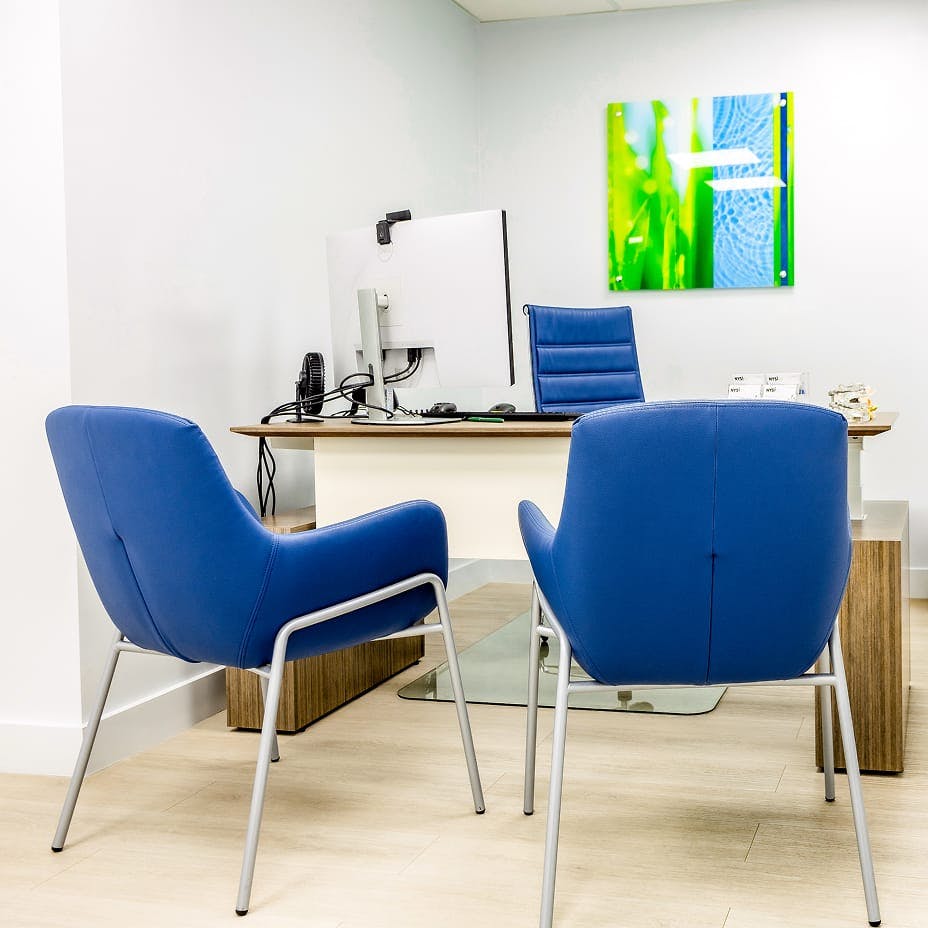Arthritis
Arthritis is when the cartilage wears away between the joints. The most common areas, people experience this is in the hands, back, hips and knees. As this happens, people will begin to experience pain, swelling and stiff joints.
Cervical Spondylotic Myelopathy
As we age, the normal wear-and-tear on our spine, can lead to a narrowing of the spinal canal. This compresses the spinal cord. Most individuals experience neck pain and stiffness, numbness and tingling in their arms and hands, clumsiness when it comes to simple tasks (handwriting, tieing ones shoe, feeding) and loss of balance.
Chordoma
Chordoma is a rare tumor that usually occurs in the spine and base of the skull. It is a malignant tumor that grows fairly slowly. It can spread to other organs, usually the lungs. It represents only about 1 percent of all malignant bone tumors.
Degenerative Disc Disease (DDD)
Degenerative disc disease/disorder (DDD) occurs when the discs between our vertebraes begin to wear down, causing the vertebral bones to get closer together. As this process happens, the discs can bulge, which can result in compressed spinal nerves or spinal cord. Although this is a natural process in aging, certain situations, such as a car accident, can accelerate the process. As this happens, people will begin to feel back pain in the area of degeneration.
Degenerative Spondylolisthesis
Degenerative spondylolisthesis occurs when a forward slip of the vertebrae of one vertebral body over the one below. As stated above in DDD, the loss of height along with increased stresses can cause the vertebrae to move forward. Individuals mainly feel this in the lower lumbar, where symptoms such as acute back pain and/or leg pain, numbness and tingling can occur.
Herniated Disc
Herniated disc occurs when the disc bulges out of its normal casing and into the spinal column. This can cause back pain due to the compression of spinal nerves and/or spinal cord. Most individuals have back pain and some can experience numbness or tingling radiating down the legs due to a compression of a spinal nerve. This is also called sciatic pain.
Osteoarthritis
This is also known as “wear and tear” arthritis, is a progressive disease of the joints. With osteoarthritis, the articular cartilage that covers the ends of bones in the joints gradually wears away. Where there was once smooth articular cartilage that made the bones move easily against each other when the joint bent and straightened, there is now a frayed, rough surface. Joint motion along this exposed surface is painful. Osteoarthritis usually develops after many years of use. It affects people who are middle-aged or older. Other risk factors for osteoarthritis include obesity, previous injury to the affected joint, and family history of osteoarthritis. Osteoarthritis can affect any joint in the body, with symptoms ranging from mild to disabling. A joint affected by osteoarthritis may be painful and inflamed. Without cartilage, bones rub directly against each other when the joint moves. This is what causes the pain and inflammation. Pain or a dull ache usually develops gradually over time. Pain may be worse in the morning and feel better with activity. Vigorous activity may cause pain to flare up.
Osteoporosis
As we get older, our bones thin and our bone strength decreases. Osteoporosis is a disease in which bones become very weak and more likely to break. It often develops unnoticed over many years, with no symptoms or discomfort until a bone breaks. Fractures caused by osteoporosis most often occur in the spine. These spinal fractures „ called vertebral compression fractures „ occur in nearly 700,000 patients each year. They are almost twice as common as other fractures typically linked to osteoporosis, such as broken hips and wrists. Not all vertebral compression fractures are due to osteoporosis. But when the disease is involved, a vertebral compression fracture is often a patient’s first sign of a weakened skeleton from osteoporosis. Individuals mainly describe back pain near the fractures. The pain often gets worse with standing or sitting for a period of time, and is often relieved by rest or lying down. Although the pain may move to other areas of the body (for example, into the abdomen or down the legs), this is uncommon.






